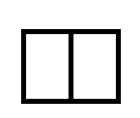
每天精彩不断
中小学学生学习之道
好方法好成绩更专业
福利
初中英语知识点归纳总结大全,共40课时,由于资料较多,我们分四期推送。主要供中学生打印学习。、、今天是最后一期,赶快收藏打印吧!
第三十一课时 宾语从句
知识概述
宾语从句就是一个句子中另一个主句中作宾语,即宾语从句是用句子作宾语。宾语从句的位置与陈述句结构中的宾语相同,它可作及物动词或介词的宾语。常用的连词有that, if, whether, what, which, who, whom, when, where, how, why等。
1、宾语从句的结构
(1) 由that引导的宾语从句
that在从句中不充当任何句子成分,只起连接主句和从句的作用。that不用翻译出来,在口语中常常省略,这种宾语从句常是陈述句。
The trouble is that we are short of money.
(2) 由连词“if”或“whether”引导。
Whether或if在句中不充当任何句子成分,只起连接作用,但不能省略。翻译为“是否”。
Do you know if Mr Smith is at home?
(3) 由连接代词who, whom, whose, which, what或连接副词when, where, how, why等引导。连接代词或连接副词位于从句的前面,起连接主句和从句的作用,从句用陈述句语序。
Do you know who broke the window?
I don’t know when I shall finish.
I wonder if the news is true.
(4)在某些形容词之后的从句有时也被看作宾语从句。如afraid, sure, sorry, glad, worried, aware, confident, angry等。
They were angry that they had lost the chance.
Can you tell me where the library is?
I’m sorry that I’m late.
2、宾语从句的时态一致
(1) 主句是过去时,宾语从句要用过去时态;主句是现在时或将来时,宾语从句则该用什么时态就用什么时态。
He told me that it would rain tomorrow.
No one knows if he will come at all.
第三十二课时 动词的时态(一)
教学重点
一般现在时
在英语中,不同时间里以不同方式发生的动作或存在的状态,要用不同的动词形式来表示,动词的这种不同形式称为动词的时态。
时态从时间上划分,可分为四大类:现在时;过去时;将来时;过去将来时。从行为上,每一类可以分为四种形式:一般式;进行式;完成式;完成进行式。这样英语的动词合起来,总共有十六种时态,初中只需掌握其中的八种时态。
1、一般现在时
(1)一般现在时表示现在的状态、习惯性的动作或主语所具备的性格和能力等。
①当动词是be时,第一人称用am,第二人称用is,其他人称用are.
②当动词是实义动词时,一般用动词原形,但如果主语是第三人称单数时,动词必须用第三人称单数形式,其变化规则如下:
例 词 |
|
一般在动词词尾加-s, |
makes drives |
以s, x, ch, sh, o结尾的动词加-es |
guesses goes |
以辅音字母加y结尾的,变y为i,再加-es |
carries flies |
助动词do(第三人称单数用does)构成否定句、疑问句及答语,但要注意助动词后原来的谓语动词要恢复原形。例如:
I like music.I don’t like music.
Do you like music?Yes, I doNo, I don’t
(2)一般现在时的用法
①表示经常、习惯性动作,常和often, usually, every day, sometimes, always等时间状语连用。如:
He goes to school by bus every day.
They often play football
②表示能力、职业、特征。如:
Miss Gao teaches English.
Do you speak Japanese?
③表示客观存在。如:
The earth moves round the sun.
Time and tide wait for no man.
④表示已经安排好或计划好的事。如
The plane takes off at 7:30.
Classes begin at 8:00
⑤在时间状语和条件状语从句中,主句用一般将来时,从句用一般现在时。如:
If I see him, I’ll tell him to give you a call.
We’ll wait until he comes back.
注意:
a. 一般现在时的一些常见的时间状语有:always, often, usually, sometimes, seldom, ever, never, every day, now and then, from time to time
b. 现在进行时有时用来代替一般现在时,表示一个经常性的重复的动作或状态。这时句中常带always, forever以表示说话人的某种感情,如赞叹、厌烦等。如:
He is always thinking of others.
He is always talking big.
第三十三课时 动词的时态(二)
教学重点
(1)一般过去时表示过去某一时间所发生的动作或存在的状态。
①当动词为be动词时,应该用相应的过去式:
am is ---- wasare ---- were
否定形式为:was not ---- wasn’t were not ---- weren’t
疑问句是将was, were 置于主语之前。
I was in Grade Three last term.
I wasn’t in Grade Two last term.
Which grade were you in?
②当动词为实义动词时,用动词的过去式,过去式的变化有规则和不规则变化。规则变化如下:
变化规则 |
例词 |
一般情况在词尾加-ed |
worked |
以-e结尾的在词尾加-d |
usedlived |
以辅音字母加y结尾的,变y为i再加-ed |
studiedcarried |
重读闭音节末尾只有一个辅音字母的,双写此辅音字母再加-ed |
stoppedfitted |
动词过去式的不规则变化需要逐个记忆。见初三教材后的不规则动词变化形式表。
go ---- wentbegin ---- begansleep ---- sleptrun ---- ran
I heard the good news just now.
The twins didn’t go to school last week
Did you see the film yesterday ?
(2)一般过去时的用法
①表示过去某一时间或一段时间发生的动作或存在的状态。常和表示过去的状语连用:yesterday, last week, a minute ago, in 1998, just now, in those days等。例如:
They had a baby last month.
My mother was ill yesterday.
He went out just now.
②用于since引导的从句,主句的谓语动词如果用现在完成时,since引导的从句一般要用一般过去时。如:
He has worked in the factory since it opened in 1990.
You haven’t changed much since we last met.
注意:
a.表示过去的时间状语常见的有:yesterday, last night(week, year, month, Sunday), then, at that time, just now, a few days(weeks, months) ago.以及由after, before, when, while引导的的表示过去的时间状语。
b. 一般过去时可以用来表示现在的时间,这主要用于日常会话,使用的语气较为婉转客气。如:
I wanted to ask if I could borrow your bike.
第三十四课时 动词的时态(三)
教学重点
一般将来时过去将来时
一般将来时
(1)一般将来时表示将要发生的动作或存在的状态。常与表示将来的时间状语连用:tomorrow, next week, next month, in a few days, from now on。如
I’m going to visit the museum this Sunday.
I’ll be there in half an hour.
We’ll arrive tomorrow.
(2)一般将来时的构成
①be going to + 动词原形。Be随主语人称和数的变化而变化,否定句在be后面加not,疑问句是将be放到主语之后。例如:
It’s going to be fine tomorrow.
He isn’t going to speak at the meeting.
What are you going to do next?
②will +动词原形。Will可以和各种人称及数的主语连用。否定句在will后加not,缩写成won’t,疑问句需将will提至主语之前。例如:
We will have a basketball match next week.
Will you come to the party?
I son’t lend it to you.
③shall+ 动词原形。此结构常用于主语为第人称I / we的句中,疑问句表示提建议或征求意见。如:
When and where shall we meet ?
Shall I turn on the TV ?
(3) 一般将来时的基本用法。
①“be going to +动词原形”表示“意图”,即打算、计划要做某事。如:
Are you going to post the letter ?
How long is he going to stay here ?
②“be going to + 动词原形”还可以表示“预见”,即现在已有迹象表明将要发生的事。如:
There are a lot of clouds. It’s going to rain.
It’s 7:50. I’m going to be late.
③“will + 动词原形”表示客观上要发生的事或表示“带意愿色彩的将来”。如:
He will help you if you ask him.
They will come back tomorrow.
过去将来时
过去将来时表示在过去将来的某一时间发生的动作或存在的状态。常用于宾语从句中。其结构与一般将来时类似,只需将助动词改为过去式。
am/ is/ are going to + 动词原形→was/ were going to +动词原形
will + 动词原形→ would+ 动词原形
should + 动词原形→ should+ 动词原形
例如:
You knew I would come.
He asked me when he would see me again.
Jim said he was going to see his friend the next day.
第三十五课时 动词的时态(四)
教学重点
现在进行时过去进行时
1、现在进行时
(1)现在进行时表示现在或现阶段正在发生或进行的动作。它是由“be + 动词的现在分词”构成。其否定句是在be之后加not。疑问句则将be提到主语之前。
(1) 现在分词的构成
例词 |
|
一般情况直接加-ing |
do—doing help ---- helping |
以不发音的e结尾的,去-e加-ing |
take---taking have ---- having |
重读闭音节末尾只有一个辅音字母的,双写此辅音字母再加-ing |
stop ---- stopping set ---- setting begin----beginning drop---dropping |
(3)现在进行时的用法。
①表示说话时正在进行的动作。如:
What are you doing ?Who are you waiting for ?
I’m cooking
②表示现阶段一直在进行的动作,但说话时不一定在进行。如:
He is working in a factory.She is translating look now.
③表示不断重复的动作。如:
The boy is always asking some strange questions.
The children are singing and dancing.
④表示位置移动的动词,可以用现在进行时表示将要发生的事。如go, come, leave, fly, start等。如:
When are you starting ?I’m leaving tomorrow.
2、过去进行时
过去进行时表示过去某一时刻正在进行的动作。
过去进行时常和表示过去的时间状语连用。如:this time yesterday, at that time, then, last night, at 9:00 yesterday, all night等。其构成和现在进行时类似,只需将be变为相应的过去式:was/ were+ 动词-ing。如:
What were you doing this time yesterday ?
When I was watering the garden, it began to rain.
I was watching TV.
I was writing while my mother was cooking.
教学难点:
①过去进行时表示一个过去的动作发生时或发生之后,另一个过去的动作正在进行。过去进行时也可用来表示过去一段时间内持续发生的动作。如:
When I was watering the garden, it began to rain.
当我在花园浇水时,突然下雨了。
While we were having a party, the lights went out.
②过去进行时还可以表示两个过去的动作同时进行,这时可用连接词while引导。如:
George was reading while his wife was listening to the radio.
③“was going + 不定式”表示过去打算。如
He was going to be our team leader.他原打算当我们的领队。
④过去进行时与一般过去的区别
过去进行时表示在过去一段时间正在进行的动作,而一般过去时表示一个完成的动作。如:
I was typing letters last night.
I typed some letters last night.
第三十六课时 动词的时态(五)
教学重点
现在完成时(一)
现在完成时
(1)现在完成时表示某个动作发生在过去,但对现在有影响(或结果),这个动作或状态可能已经结束,也可能还要持续下去。
其构成形式是:have/ has +动词过去分词
否定句在have/ has 后加not→haven’t/ hasn’t
疑问句要将have/ has放到主语之前。
(2)现在完成时的用法。
①表示过去发生的动作对现在造成的影响和结果。常用的时间状语有:already, yet, ever, never, just等。如:
I have already finished the work.
Have you ever been to Beijing?
He has never seen such a nice car.
②表示过去已经开始,持续到现在的动作或状态。往往和表示一段时间的状语连用。如:
for +时间段;
since+ 时间点(表时间段);时间段+ago;一般过去时态。如:
I have taught in this school for ten years.
I have taught in this school since ten years ago.
③for和since引导的短语都表示“一段时间”,所以谓语动词应该用延续性动词,不能用非延续性动词。延续性动词表示该动词可以延续一段时间,如:live, work, study, teach, stay等,非延续性动词是指该动词所表示的动作不能持续,是短暂的、瞬间完成的,如:borrow, come, arrive, get, leave, die等。
许多非延续性动词可以用意思相同或相近的延续性动词来表示:
leave ---- be away fromarrive ---- be in
go ---- be awaycome ---- be in / atfinish ---- be over
buy ---- haveborrow ---- keepdie ---- be dead
join ---- be in/be a member ofbegin ---- be on
如:He has goneHe has been away for an hour
Ihave bought a watchI have had the watch for several days
④have/ has been to 和have/ has gone to
have/ has been to :曾去过
have/ has gone to:已去,去了(不在说话现场,在途中或已经到达)
My mother has been to America.我妈妈曾经去过美国
My mother has gone to America.我妈妈已经去了美国
(3)现在完成时与一般过去时的用法比较
①一般过去时只单纯表示过去,和现在不发生联系,它可以和确定的表示过去的时间状语连用。而现在完成时表示某一完成的动作对现在造成的影响或结果,强调的是现在的情况,所以不能和确定的过去的时间状语连用。如:
We have visited the farm(现在对农场有所了解)
We visited the farm last week(说明上周参观农场这件事)
②如果询问某事发生的时间、地点只能用一般过去时。如:
When did you lose your cat ?
I lost it last night.I found it in the garden.
第三十七课时 动词的时态(六)
教学重点
现在完成时(二)过去完成时
现在完成时难点:
①由since引导的时间状语,它们的主句通常使用完成时态。
He has taught English since 1970.
It has been a long time since I last saw you.
②只有在It is …since…这种结构中,主句的谓语才可用一般现在时,现在完成时或一般过去时。如:
It’s ten years since I left school.
It’s a long time since I saw you last.
③表示短暂性的动词不能与表示一段时间的状语连用,这类动词有:
begin, borrow, buy, close, come, die, fall, find, finish,
join, kill, lend, leave, sell, start, stop等,如:
不能说:His father has died for three years.
只能说:His father died three years ago.
不能说:He has left home for two months.
只能说:He left home two months ago.
④非延续性动词的否定形式可以表示状态的延续。可与for, since时间状语连用。如:
I haven’t seen him for a long time.
I haven’t heard from him since he left.
She hasn’t left home ever since she lost her job.
⑤have(has) been 和have (has) gone的区别。
Have been to a place意思是“到过、去过”,表示曾到过某处,但现在人不在那儿;have gone to意思是“去了”,表示已经去了某地,现在人可能在去的途中或已在那儿。如:
Has she ever been to Nanjing ?
You have never been there before, have you?
I have been to Guilin, I went there last year.
总之,have been to讲的是过去的情况,强调去过或没有,着重于到目前为止的一个结果,而have gone to指现在人在不在,只用于第三人称,不用于第一、第二人称,不能用来代替have been to.
2、过去完成时
(1)过去完成时表示在过去某一时间之前已经发生的动作或存在的状态。其结构是:had+ 动词过去分词。否定、疑问句同现在完成时一样。
(2)用法
①表示在过去某一时间或动作之前已经发生或完成的动作,即“过去的过去”。如:
The meeting had begun when we got there.
He said he had seen the film.
②表示某一动作在过去某一时间已经开始,一直延续到过去的另一时间,常与for或since引导的时间状语连用。如:
The film had been on for tem minutes when we got there.
She said that she had made much progress since she came here.
第三十八课时 动词时态的一致
教学重点
时态的一致
时态的一致主要是指在主从复合句中,主句与从句之间的时态一致通常主句的时态决定从句的时态。原则是:当主句是现在时与将来时,从句的谓语根据具体情况可以使用任何时态。但是,当主句谓语使用过去时,从句必须使用过去时态。如下表:
主句谓语 |
从句谓语 |
含 义 |
一般现在时 |
现在进行时;一般现在时 |
主、从句的动作同时发生 |
一般将来时;will,can,may+动词 |
表示从句的动作在主句的动作之后发生 |
|
表示从句的动作在主句的动作之前发生 |
||
现在完成时 |
表示从句的动作在主句的动作之前发生 |
|
过去进行时;一般过去时 |
表示主、从句的动作同时发生 |
|
would,could,might+动词 |
表示从句的动作在主句之后发生 |
|
过去完成时 |
表示从句的动作在主句动作之前发生 |
教学难点
1、宾语从句和间接引语与主句的时态一致,符合上述原则。但如果宾语从句表示客观事实和真理,即使主句谓语用过去时,从句的谓语也应该使用一般现在时:如:
Our teacher toldus a little knowledge isdangerous
我们老师告诉我们一知半解是危险的。
He saidthat light travelsfaster than sound.
他说光传播速度比声音快。
2、有些形容词后可以跟从句,这种从句常看成宾语从句,它的主、从句时态也符合上述原则。这些形容词有:afraid, glad, sure, sorry, certain, aware, confident, delighted, lucky, surprised, worried。如:
I’m surethat he will succeed.
3、主语从句、表语从句、同位语从句也要与主句的时态一致。如:
That is whyhe was late for school.
例题:
1. Miss Gao isn’t here. She _______ to the station to meet Mr Brown.
A. wentB. has goneC. has beenD. would go
2. ________ a letter from him since he left.
A. haven’t gotB. didn’t receiveC. didn’t haveD. haven’t feel
3. When I came in, they______ games in the room.
A. were playingB. are playingC. playedD. plays
4. Hurry up! The play ________ for ten minutes.
A. has begunB. had begunC. has been onD. began
第三十九课时 被动语态(一)
教学重点
被动语态
在英语中,须通过动词的某种形式来表明句子的主语是动作的执行者还是动作的承受者,前一种句子是主动句,后一种是被动句。
英语的动词有两种语态形式,即主动语态和被动语态。如果主语是动作是执行者,谓语动词用主动语态。如果主语是动作的对象,谓语动词用被动语态。如:
They build this school.
They school is built by them.
1、被动语态的构成
“助动词 +(及物动词的)过去分词”构成动词被动语态的形式。助动词be有人称、数和时态的变化,其变化规则与be作为系动词的变化完全一样。如:
This kind of TV set is made in Guangzhou.(一般现在时)
The thief was arrested.(一般过去时)
A new road is being built outside my house.(现在进行时)
The man was being questioned by the police.(过去进行时)
Your wallet has been found.(现在完成时)
By the time we got there. The work had been finished.(过去完成时)
My sister would be taken care of by grandma.(过去将来时)
Your watch will be repaired.(一般将来时)
教学难点:
在英语里,有一些动词是不及物动词,后面不能跟宾语,所以没有被动语态。以下动词只有主动语态,没有被动语态。
appear, die, happen, fall, arrive.
2、五种时态的被动语态举例
①一般现在时
A lot of books are kept in our school library.
Radio is used in everyday life.
②一般过去时
A thief was caught last night.
They were asked to speak at the meeting.
③现在进行时
A new library is being put up in their school now.
The watch is being repaired.
④一般将来时
The class meeting will be held next Saturday afternoon.
The thieves will be arrested.
⑤现在完成时
My bag has been stolen.
Many stamps have been collected by me since last year.
3、主动语态变被动语态
①主动结构的宾语变为被动结构的主语。
②主动结构的谓语动词由主动语态变为被动语态。
③主动结构的主语变为介词by的宾语,组成介词短语,放在被动结构中谓语动词之后。在动作的执行者无须说明或不必强调时,by短语可以省略。
④主动语态、被动语态两种时态要保持一致。如:
We repaired the motor.
The motor was repaired by us.
第四十课时 被动语态(二)
教学重点
被动语态(二)
几种不同形式的被动语态
(1)含有直接宾语和间接宾语的主动结构,变为被动结构时,可以将其中一个宾语变为主语,另一个不动,一般是主动结构的间接宾语变为被动结构的主语,这样句子显得自然一些。如:
He showed me his pictures.
I was shown his pictures by him.
I was sent a birthday present (by him).
A birthday present was sent to me (by him).
(2)含有复合宾语的主动句变为被动句的方法。
①将宾语变为主语,宾语补足语保留不动。如:
They call her little Li.She is called little Li.
He left the door open.The door was left open by him.
②make, let, hear, watch, see, feel, have, notice, help等动词后面作宾语补足语的不定式一般不带to,可是当变为被动语态时,后面的不定式必须带to。如:
My brother often made me do this and that when I was young.
I was often made to do this and that by my brother when I was young.
③含有情态动词的被动语态,是由“情态动词 + be+(及物动词的)过去分词”构成。如:
They can not find him.
He can not be found.
④短语动词的被动语态
一般说来,只有及物动词才有被动语态,因为只有及物动词才可能有动作的承受者。但有许多由不及物动词加介词及其他词类构成的短语动词,相当于及物动词,可以有宾语,因而也可以有被动语态。但应注意,短语动词是一个不可分割的整体,在变为被动语态时,不可丢掉构成短语动词的介词或副词。如:
They had put out the fire before the fire brigade arrived.
The fire had been put out before the fire brigade arrived.
They will set up a new public school here.
A new public school will be set up here.
You must take good care of these trees.
These trees must be taken good care of.
被动语态的基本用法
①不知道谁是动作的执行者或者没有必要指出谁是动作的执行者时。如:
Paper is made from wood.
The house is quite old, it was built in 1950.
He was wounded in the fight.
②需要强调动作的承受者时。如:
Calculator can’t be used in the maths exam.
Books and newspapers in the reading room mustn’t be taken away.
He was awarded first prize in that contest.
③为使语气婉转,避免提及自己或对方而使用被动语态,或由于修辞的需要使用被动语态使句子得以更好安排。如:
The construction of the new lab must be completed by the end of next month.
Electricity is used to run machines.
声明本文版权归原作者所有,如涉及图文、版权或其它问题,请及时与我们联系(微信号:bslb01),我们将立即更正。


尊敬的畅言客户,您好。您所使用的网站评论功能已广告作弊被限制使用,如有疑问,请咨询客服电话400-780-9680。